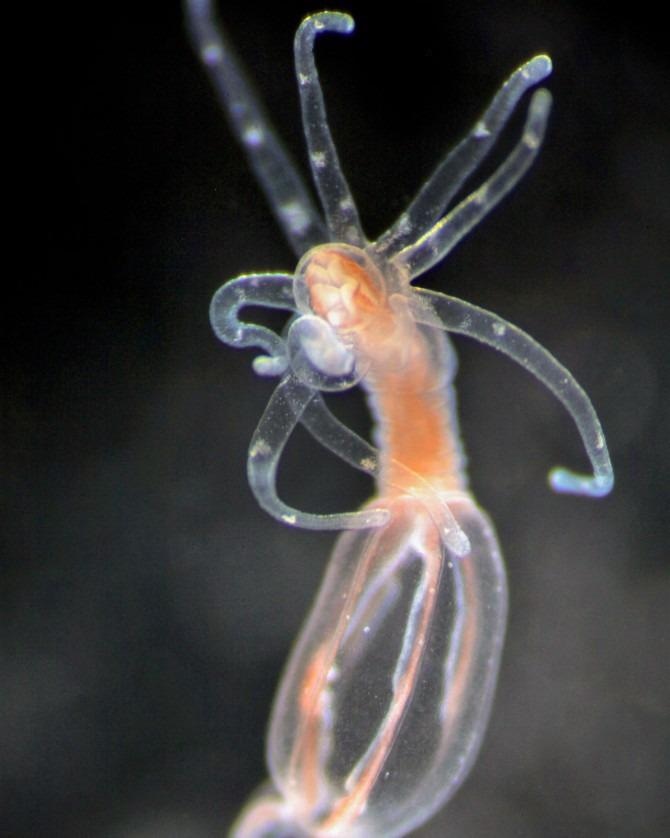According to a recent Cornell study, the cnidocytes—or stinging cells—that are found in sea anemones, hydrae, corals, and jellyfish and make us cautious while wading in the ocean are also an ideal way of understanding the creation of new cell types.
 Like all cnidarians, the sea anemone, Nematostella vectensis, has cnidocytes, or stinging cells. Image Credit: Cornell University
Like all cnidarians, the sea anemone, Nematostella vectensis, has cnidocytes, or stinging cells. Image Credit: Cornell University
Leslie Babonis, assistant professor of ecology and evolutionary biology in the College of Arts and Sciences, demonstrated that these stinging cells developed by reusing a neuron inherited from a pre-cnidarian ancestor in a new study published in the Proceedings of the National Academy of Sciences on May 2nd, 2022.
These surprising results demonstrate how new genes acquire new functions to drive the evolution of biodiversity. They suggest that co-option of ancestral cell types was an important source for new cell functions during the early evolution of animals.”
Leslie Babonis, Assistant Professor, Ecology and Evolutionary Biology, College Of Arts and Sciences, Cornell University
One of the major issues in evolutionary biology, according to Babonis, is figuring out how specialized cell types, like stinging cells, emerge. Cnidocytes have been known to grow from a pool of stem cells that also give rise to neurons (brain cells) for over a century, but no one knew how those stem cells chose to create either a neuron or a cnidocyte until now.
Babonis believes that studying this mechanism in current cnidarians can offer information about how cnidocytes developed in the first place.
Cnidocytes (“cnidos” is Greek for “stinging nettle”) are a type of cell found in the phylum Cnidaria that can fire a toxic barb or glob, shock prey, or discourage attackers. Cnidarians are the only creatures with cnidocytes, whereas neurons are found in many animals, according to Babonis.
To learn how a neuron may be modified to generate a new cell, she and her colleagues at the University of Florida’s Whitney Lab for Marine Bioscience examined cnidarians, notably sea anemones.
One of the unique features of cnidocytes is that they all have an explosive organelle (a little pocket inside the cell) that contains the harpoon that shoots out to sting you.”
Leslie Babonis, Assistant Professor, Ecology and Evolutionary Biology, College Of Arts and Sciences, Cornell University
“These harpoons are made of a protein that is also found only in cnidarians, so cnidocytes seem to be one of the clearest examples of how the origin of a new gene (that encodes a unique protein) could drive the evolution of a new cell type,” she added.
The researchers indicated that cnidocytes form by turning down the expression of a neuropeptide called RFamide in a subpopulation of growing neurons and repurposing those cells as cnidocytes through functional genomics in the starlet sea anemone Nematostella vectensis.
Furthermore, the scientists determined that a single cnidarian-specific regulatory gene controls both the brain function and the cnidocyte-specific features of those cells.
Both neurons and cnidocytes are secretory cells that can eject material out of the cell, according to Babonis. Neuropeptides are proteins secreted by neurons that quickly transmit data to other cells. Poison-laced harpoons are secreted by cnidocytes.
“There is a single gene that acts like a light switch—when it’s on, you get a cnidocyte, when it’s off you get a neuron,” Babonis said. “It’s a pretty simple logic for controlling cell identity.”
This is the first study to establish that this logic exists in a cnidarian, therefore this trait was expected to control how cells differentiated from one another in the earliest multicellular animals, according to Babonis.
Future research by Babonis and her team will look at how common this genetic off/on switch is in the development of new cell types in animals. One project, for instance, will look at whether the origin of fresh skeleton-secreting cells in corals is driven by a similar process.
Source:
Journal reference:
Babonis, L. S., et al. (2022) A novel regulatory gene promotes novel cell fate by suppressing ancestral fate in the sea anemone Nematostella vectensis. Proceedings of the National Academy of Sciences. doi.org/10.1073/pnas.2113701119.